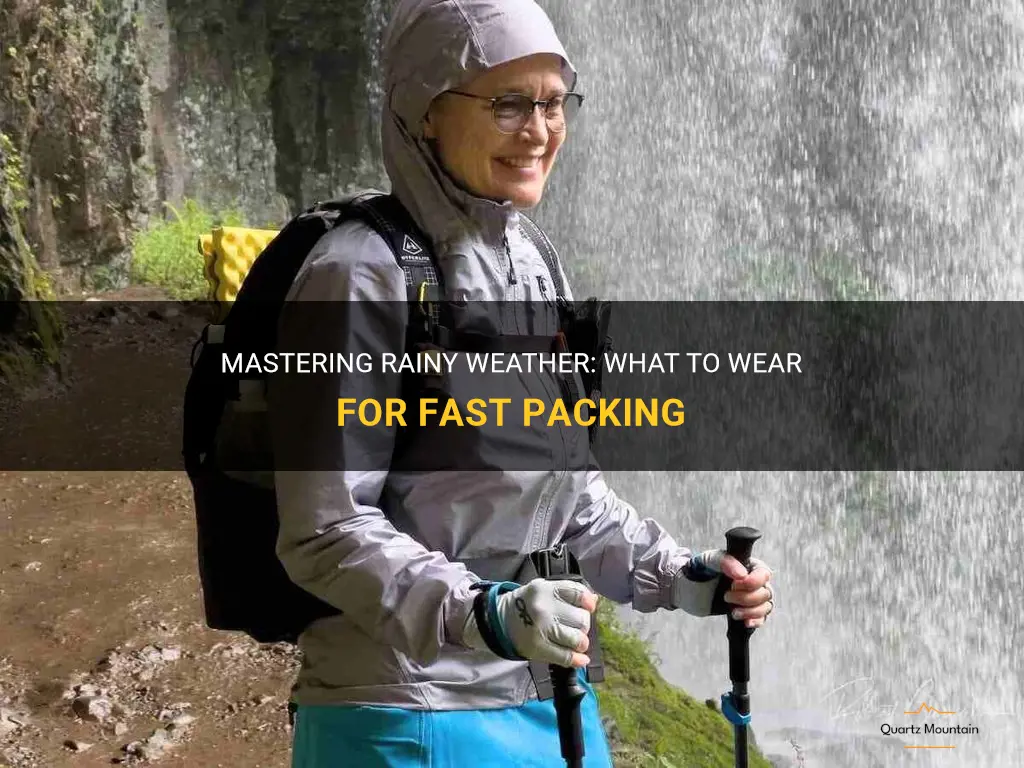
Rainy weather can make any outdoor adventure feel like a daunting task. From wet and slippery terrain to heavy downpours, it can be difficult to stay comfortable and dry. However, with the right gear and clothing, you can master rainy weather and confidently take on any fast-paced adventure. In this article, we will explore what to wear for fast packing in rainy weather, ensuring you stay dry and focused on the journey ahead.
| Characteristics | Values |
|---|---|
| Breathability | High |
| Waterproofing | High |
| Durability | High |
| Lightweight | Yes |
| Quick-drying | Yes |
| Windproof | Yes |
| Versatility | High |
| Ventilation | Medium |
| Hood | Yes |
| Adjustable cuffs | Yes |
| Sealed seams | Yes |
| Reflective details | Yes |
| Reinforced knees | Yes |
| Moisture-wicking | Yes |
What You'll Learn
- What type of rain gear is best for fast packing in the rain?
- Are there any specific brands or products that are recommended for fast packing in rainy conditions?
- Should I prioritize waterproof clothing or breathable clothing for fast packing in the rain?
- Are there any essential accessories or gear that should be included in my rain gear setup for fast packing?
- Are there any specific considerations or tips for staying comfortable and dry while fast packing in the rain?

What type of rain gear is best for fast packing in the rain?
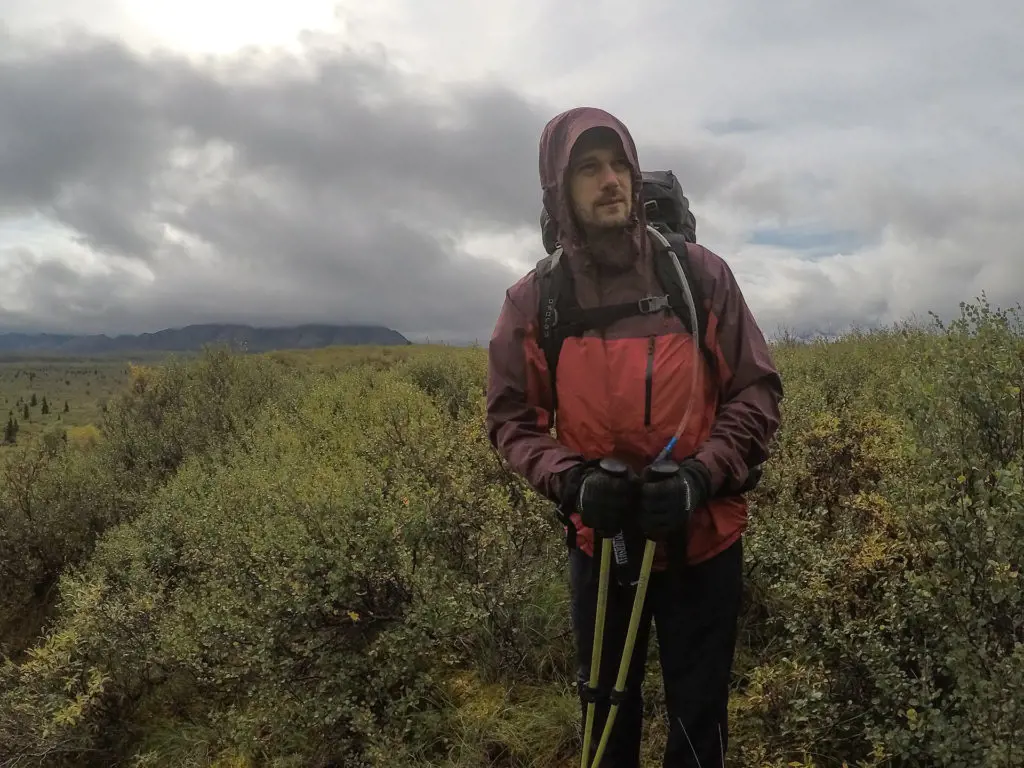
When fast packing in the rain, having the right rain gear is crucial to stay dry and comfortable. Fast packing, also known as ultralight backpacking or thru-hiking, involves covering long distances in a short amount of time. In these situations, where every ounce counts, it's important to choose rain gear that strikes a balance between being lightweight and providing effective protection against rain.
The best type of rain gear for fast packing in the rain is a combination of a lightweight rain jacket, rain pants, and gaiters. A lightweight rain jacket made of a waterproof and breathable material, such as Gore-Tex or eVent, is essential to keep the upper body dry. It should have a hood that can be adjusted to fit snugly around the head and face, as well as adjustable cuffs and a hem to prevent water from seeping in. The jacket should also have ventilation features, such as underarm zippers, to allow for airflow and prevent overheating.
In addition to a rain jacket, a pair of lightweight rain pants is necessary to keep the lower body dry. These pants should be made of a waterproof and breathable material, preferably with sealed seams to prevent water from seeping in. They should be loose-fitting to allow for freedom of movement, and should have an adjustable waistband and cuffs to ensure a snug fit. Some rain pants also have zippers along the legs to make it easier to put them on or take them off without removing your shoes.
Gaiters are another important piece of rain gear for fast packing in the rain. These are protective coverings that go over the lower legs and shoes to keep water, mud, and debris out. Gaiters should be lightweight, yet durable, and should have a secure attachment system, such as a strap or hook, to keep them in place. They should be made of a waterproof material to provide effective protection against rain.
When choosing rain gear for fast packing in the rain, it's important to consider the weight and packability of the gear. The gear should be lightweight and compact enough to fit easily into a backpack or be worn without adding excessive weight or bulk. Look for rain gear that is specifically designed for fast packing or ultralight backpacking, as these are often made with lightweight materials and have minimal features to reduce weight.
It's also important to consider the conditions you will be facing when choosing rain gear. For example, if you'll be hiking in a rainforest where it's warm and humid, you'll want rain gear with good ventilation to prevent overheating. On the other hand, if you'll be hiking in a cold and windy alpine environment, you'll want rain gear that provides extra insulation to keep you warm.
Finally, it's always a good idea to test your rain gear before heading out on a fast packing trip. Wear your rain jacket, pants, and gaiters in the rain to see how well they perform and if there are any leaks or areas of concern. Make any necessary adjustments or repairs before embarking on your trip to ensure that your gear is in optimal condition.
In conclusion, when fast packing in the rain, it's important to choose rain gear that is lightweight, waterproof, and breathable. A combination of a lightweight rain jacket, rain pants, and gaiters is recommended to provide effective protection against rain and keep you dry and comfortable. Consider the weight, packability, and specific conditions of your trip when choosing rain gear, and always test your gear beforehand to ensure it performs as expected. With the right rain gear, you can stay dry and enjoy your fast packing adventure even in wet weather.
Essential Items to Pack in Your Overnight Bag for Giving Birth
You may want to see also

Are there any specific brands or products that are recommended for fast packing in rainy conditions?
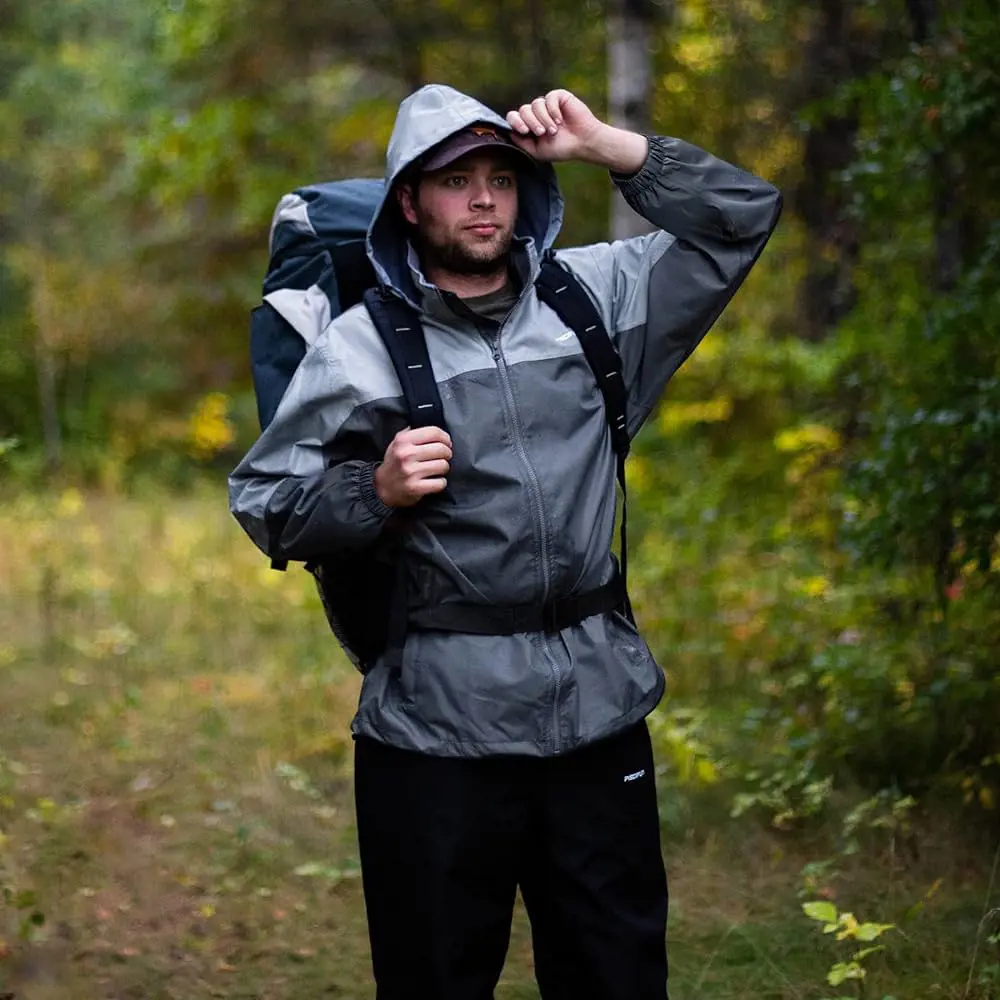
When it comes to packing for a trip in rainy conditions, it is important to choose the right gear and accessories to ensure that you stay dry and comfortable throughout your journey. While there are no specific brands or products that are universally recommended for fast packing in rainy conditions, there are a few key items that you should consider including in your packing list.
- Waterproof backpack or duffel bag: One of the most important items for packing in rainy conditions is a waterproof backpack or duffel bag. Look for a bag that is made from waterproof materials and features sealed seams to keep your belongings dry, even in heavy rain. Additionally, choosing a bag with multiple compartments and organizational pockets will make it easier to access your items quickly.
- Waterproof clothing: It is essential to pack waterproof clothing when traveling in rainy conditions. Look for a high-quality rain jacket and pants that are made from waterproof materials like Gore-Tex or nylon. These materials will not only keep you dry but also provide breathability to prevent overheating. Additionally, consider packing a compact umbrella for extra protection during short walks or when exploring urban areas.
- Waterproof footwear: Keeping your feet dry is crucial for staying comfortable in rainy conditions. Invest in a pair of waterproof boots or shoes that are designed for outdoor activities in wet conditions. Look for boots with a Gore-Tex lining or rubber construction to ensure that no water seeps through. Socks made from merino wool or synthetic materials like polyester will also help to keep your feet dry and prevent blisters.
- Dry bags or waterproof pouches: To protect your electronic devices, documents, and other valuable items, it is a good idea to pack them in dry bags or waterproof pouches. These waterproof storage solutions will keep your items completely dry, even if your bag gets wet. They come in various sizes and can be used for different purposes, such as storing your phone, camera, passport, or wallet.
- Quick-drying travel towel: Packing a quick-drying travel towel can be useful for various situations while traveling in rainy conditions. Whether you need to dry yourself off after getting caught in a downpour or wipe down wet surfaces, a compact and absorbent towel will come in handy. Look for a microfiber towel that is lightweight, compact, and dries quickly so that you can pack it back into your bag without adding extra weight or taking up too much space.
- Waterproof accessories: In addition to the essential items mentioned above, there are a few extra accessories that can enhance your packing strategy in rainy conditions. Packing a waterproof hat or cap can help keep rain off your face and prevent water from dripping down your neck. Waterproof gloves are also useful for keeping your hands dry and warm in wet weather. If you plan on taking electronics with you, consider packing waterproof phone cases or camera covers to protect them from moisture.
Ultimately, the best brands and products for fast packing in rainy conditions will depend on personal preferences, budget, and specific needs. When selecting items, be sure to read reviews, compare features, and consider the durability and performance of the products. By choosing the right gear, you can stay dry and comfortable while traveling in rainy conditions.
Essential Items to Pack for Your Summer Birthright Trip
You may want to see also

Should I prioritize waterproof clothing or breathable clothing for fast packing in the rain?
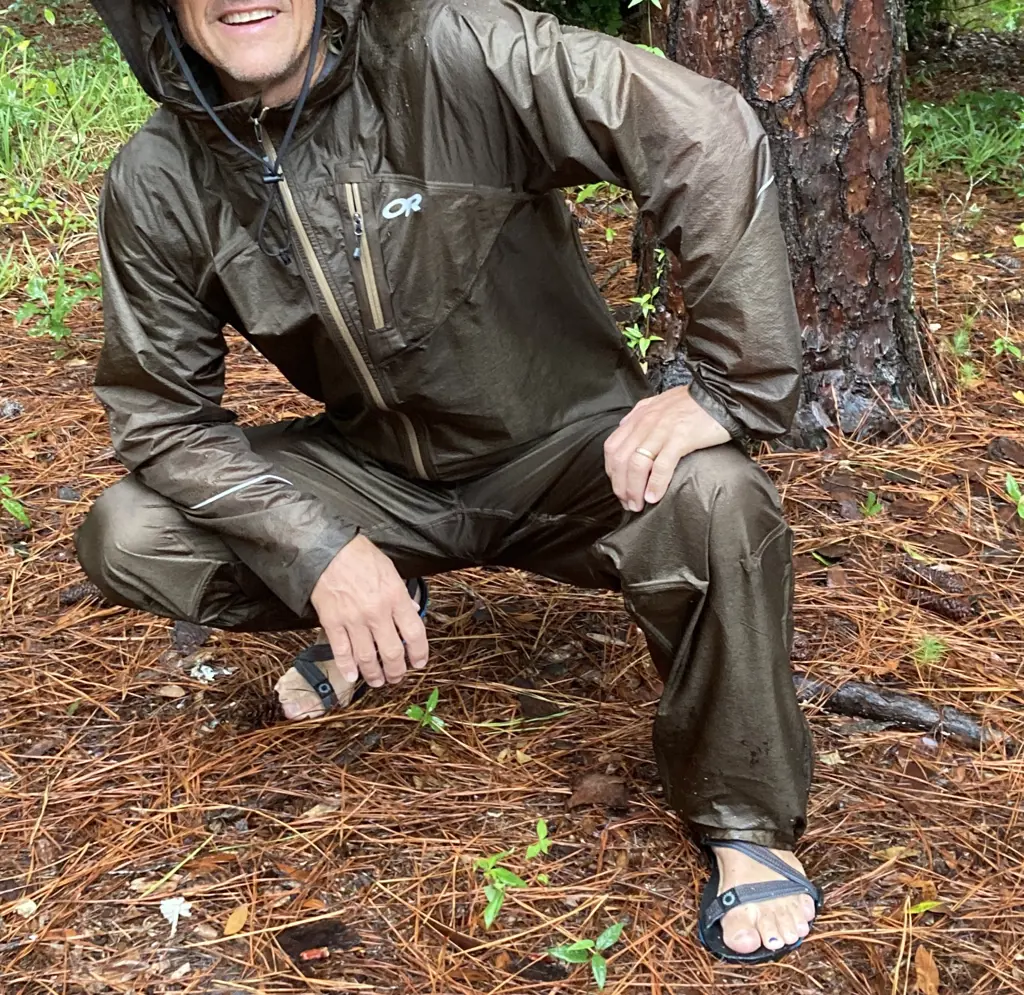
When it comes to fast packing in the rain, having the right clothing is crucial. It can be challenging to decide whether to prioritize waterproof clothing or breathable clothing. Both options have their benefits and drawbacks, and your decision will depend on various factors such as the temperature, duration of your activity, and personal preference.
Waterproof clothing is designed to keep you dry by preventing water from penetrating through the fabric. It is typically made of materials such as Gore-Tex or eVent, which have a waterproof membrane that repels water. This type of clothing is excellent at keeping you dry in heavy rain or wet conditions. However, it tends to be less breathable, and if you are engaging in high-intensity activities, you might find yourself sweating and feeling clammy inside.
On the other hand, breathable clothing allows air to circulate, preventing your body from becoming damp and sweaty. It allows moisture to escape, keeping you comfortable even during intense activities. Fabrics such as merino wool and polyester are known for their breathability and are often used in outdoor clothing. While breathable clothing may not provide the same level of protection against heavy rain as waterproof clothing, it can be more comfortable during lighter showers or when you are constantly on the move.
To make the decision of prioritizing waterproof or breathable clothing, consider the conditions in which you will be fast packing. If you expect heavy rainfall or will be exposed to wet conditions for an extended period, waterproof clothing should be your priority. It will keep you dry and protected regardless of how much rain is falling. However, if you anticipate lighter rain showers or are engaging in high-intensity activities, breathable clothing might be a better choice. It will allow your body to sweat and evaporate moisture, preventing you from becoming too hot and uncomfortable.
In some cases, you might even consider a combination of both waterproof and breathable clothing. Many outdoor brands offer garments that have both waterproof and breathable properties. These garments often feature a waterproof shell with strategically placed vents or mesh panels to enhance breathability. This combination allows for better temperature regulation while still providing some level of protection against rain.
It's also important to consider other factors such as insulation and durability when choosing your clothing. In cold temperatures, having insulation is essential to keep you warm and prevent hypothermia. Look for garments with synthetic or down insulation if you will be fast packing in colder conditions. Additionally, durable fabrics that can withstand abrasion and rough use are crucial if you will be navigating through dense vegetation or rocky terrain.
In conclusion, the decision to prioritize waterproof or breathable clothing for fast packing in the rain depends on several factors. If you expect heavy rain or wet conditions, waterproof clothing should be your priority. However, if you anticipate lighter rain showers or will be engaging in high-intensity activities, breathable clothing might be a better choice. Consider factors such as temperature, duration of activity, and personal preference when making your decision. Additionally, options that combine both waterproof and breathable properties can provide a balance between protection and comfort.
The Essential Packing Guide for a Walking Tour in Scotland
You may want to see also

Are there any essential accessories or gear that should be included in my rain gear setup for fast packing?
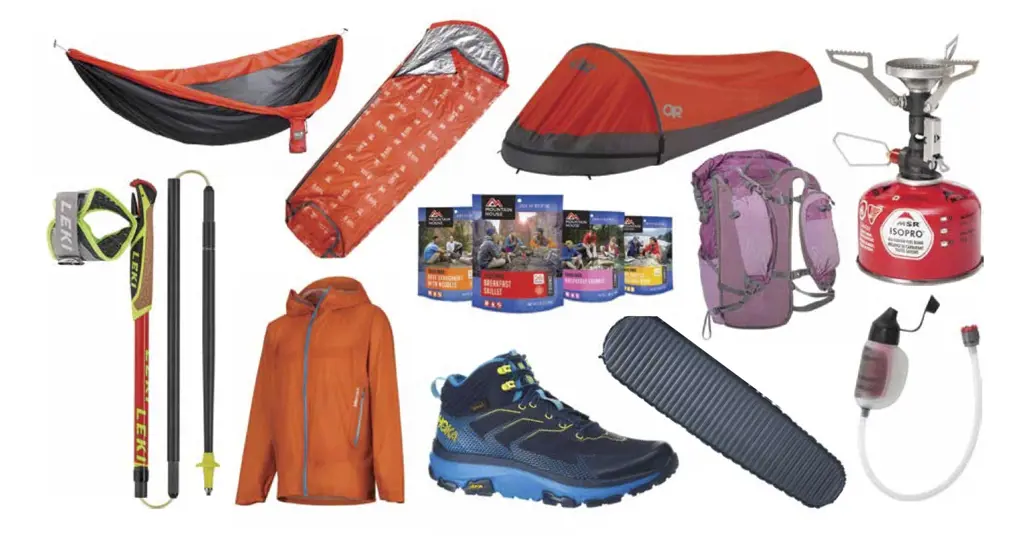
When it comes to fast packing, having the right gear and accessories is essential, especially when you're dealing with rainy conditions. Rain can quickly dampen your spirit and make the whole experience uncomfortable if you're not prepared. To ensure you have a successful fast packing adventure in the rain, here are some essential accessories and gear that should be included in your rain gear setup.
- Rain Jacket: A high-quality waterproof rain jacket is the first and most crucial piece of gear for staying dry in the rain. Look for a jacket with a waterproof and breathable fabric, such as Gore-Tex, that will keep rain out while allowing moisture to escape. Choose a jacket with adjustable hood, cuffs, and waist to ensure a snug fit and maximum protection.
- Rain Pants: To complete your rain gear setup, invest in a pair of waterproof rain pants. These will keep your lower body dry and protected from the rain and prevent water from seeping into your boots. Look for pants with reinforced knees and seat for added durability, and make sure they have a full-length zipper or velcro closure for easy on and off.
- Waterproof Boots: One of the most important aspects of fast packing in the rain is keeping your feet dry. Choose a pair of waterproof hiking boots that are both comfortable and durable. Look for boots with a waterproof and breathable membrane, such as Gore-Tex, to keep your feet dry while allowing perspiration to escape. Ensure that the boots have a good grip and ankle support to help you navigate wet and slippery terrain.
- Gaiters: Gaiters are fabric covers that go over your boots and lower legs to keep water, mud, and debris out. They are particularly useful when fast packing in wet and muddy conditions. Look for gaiters that are made from waterproof and breathable materials and have a secure attachment system. Choose a height that provides adequate coverage for your trail conditions, whether it's ankle gaiters or full-length ones.
- Waterproof Backpack Cover: To protect your gear from getting wet, it's important to invest in a waterproof backpack cover. Look for a cover that fits your specific backpack size and is made from durable and waterproof materials. Some backpacks come with integrated rain covers, but if yours doesn't, make sure to purchase one separately.
- Dry Bags: Keeping your gear dry inside your backpack is just as important as protecting the outside. Invest in a set of dry bags of varying sizes to organize and protect your clothing, electronics, and other essential items. Look for dry bags that are made from waterproof and durable materials, and make sure they have a reliable closure system, such as roll-top or zip-lock.
- Quick-Drying Clothing: Even with the best rain gear, you may still get wet from rain or perspiration. To stay comfortable, it's important to wear quick-drying clothing made from synthetic or merino wool materials. These fabrics will wick moisture away from your skin and dry quickly, keeping you warm and comfortable during your fast packing adventure.
- Trekking Umbrella: For those who prefer not to wear a rain jacket, a trekking umbrella can provide an alternative way to stay dry. Look for a lightweight and windproof umbrella that can withstand strong gusts. Ensure the umbrella has a sturdy construction and a comfortable handle for easy grip.
In conclusion, having the right gear and accessories can make a significant difference in your fast packing experience in the rain. A high-quality rain jacket, rain pants, waterproof boots, gaiters, backpack cover, dry bags, quick-drying clothing, and a trekking umbrella are all essential items to include in your rain gear setup. With these items, you can stay dry, comfortable, and enjoy your fast packing adventure even in wet and rainy conditions.
Essential Items to Pack for a Day at iD Tech Camp
You may want to see also

Are there any specific considerations or tips for staying comfortable and dry while fast packing in the rain?
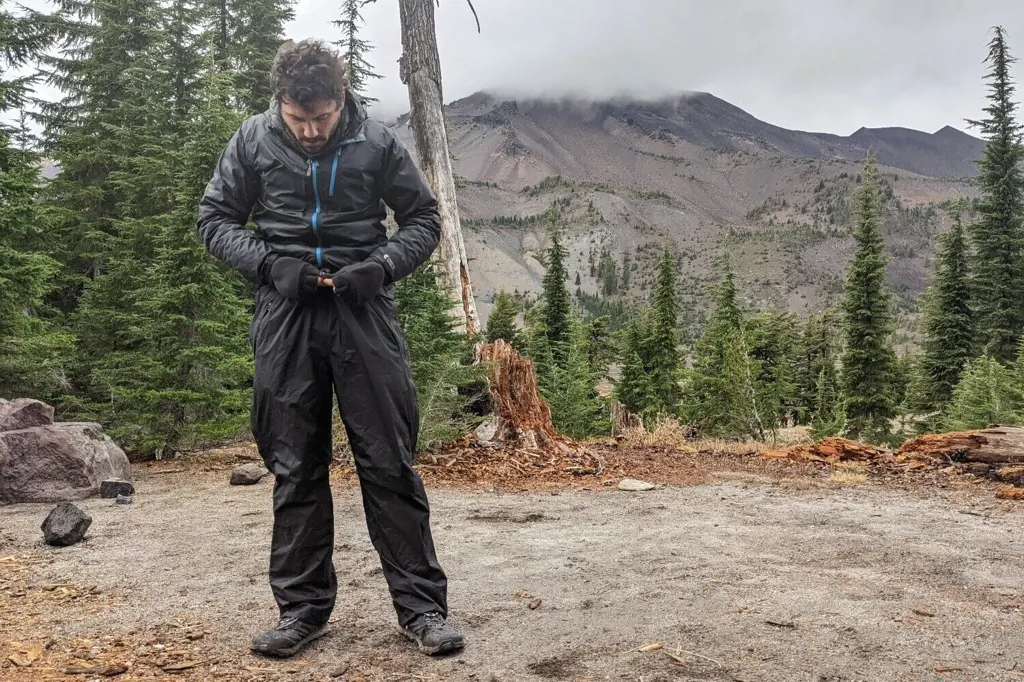
Fast packing, also known as fast hiking or fastpacking, combines the speed of running with the endurance of backpacking. It involves traveling at a brisk pace with a lightweight pack, covering long distances in a shorter amount of time. However, one element that can significantly affect the comfort and success of a fast packing trip is rain. In this article, we will discuss specific considerations and tips for staying comfortable and dry while fast packing in the rain.
- Waterproof Gear: The first and most crucial consideration for fast packing in the rain is to invest in waterproof gear. This includes a waterproof backpack, rain jacket, rain pants, and rain cover for your shoes. It is important to choose high-quality, breathable materials that provide effective protection against water. Additionally, consider using a waterproof liner or dry bag for your gear inside the backpack.
- Layering: Layering is key to staying comfortable and dry while fast packing in the rain. Start with a moisture-wicking base layer that will help to keep your skin dry. Avoid cotton, as it retains moisture and can lead to chafing and discomfort. Add an insulating layer, such as a lightweight fleece or down jacket, to provide warmth. Finally, top it off with a waterproof and breathable outer layer to shield you from the rain.
- Headwear: Keeping your head dry is essential to overall comfort. Wear a waterproof hat or a waterproof hood to protect your head from rain. This will help prevent water from dripping down into your eyes and face, keeping your vision clear. You can also consider using a rainproof cap with a brim to provide additional protection.
- Footwear: Wet feet can quickly lead to discomfort and blisters. Invest in a pair of waterproof hiking shoes or boots that provide excellent traction. Consider wearing gaiters to keep water out of your shoes and prevent debris from entering.
- Hydration: It is crucial to stay hydrated, even in the rain. Invest in a hydration pack or make sure to have easy access to water bottles, as rain can wash away sweat and give a false sense of hydration. Use a waterproof cover for your hydration pack or store your water bottles in a waterproof pocket or bag.
- Plan Your Route: When fast packing in the rain, it is essential to plan your route carefully. Avoid trails or areas that are prone to flooding, as this can be dangerous. Also, be aware of potential hazards such as slippery rocks and steep descents, as rain can make these conditions even more treacherous.
- Dry Change of Clothes: Pack a dry set of clothes in a waterproof bag or dry sack. This will allow you to change into fresh, dry clothes if you get wet. Wet clothes can lead to chafing and discomfort, and changing into dry clothes can help prevent this.
- Pace Yourself: Fast packing in the rain can be mentally and physically demanding. Be mindful of your pace and listen to your body. Take breaks as needed and adjust your speed according to the terrain and weather conditions. Pushing too hard without giving yourself enough time to rest and recover can lead to exhaustion and increased risk of injury.
In conclusion, fast packing in the rain requires specific considerations and tips to stay comfortable and dry. Investing in waterproof gear, layering properly, protecting your head, and keeping your feet dry are all important factors. Planning your route, staying hydrated, having a dry change of clothes, and pacing yourself will contribute to a successful fast packing trip in the rain. By following these tips, you can enjoy the benefits of fast packing while mitigating the challenges posed by inclement weather.
Preparing to Sell Your House: What Items Should You Pack Up?
You may want to see also
Frequently asked questions
When fast packing in the rain, it is important to wear clothing that will keep you dry and comfortable. Opt for a waterproof and breathable rain jacket to keep you dry from the rain. Pair it with a lightweight and quick-drying base layer to wick away moisture from your body. Additionally, wear waterproof pants to protect your legs from getting wet. Don't forget to wear synthetic or wool socks to keep your feet dry.
It is not recommended to wear cotton clothing when fast packing in the rain. Cotton absorbs moisture and takes a long time to dry, which can lead to discomfort and even hypothermia in wet conditions. Instead, choose synthetic or wool materials that are quick-drying and moisture-wicking to keep you dry and warm.
For fast packing in the rain, it is important to wear waterproof and breathable footwear. Look for hiking boots or trail running shoes that are specifically designed to withstand wet conditions. Make sure they have a waterproof membrane such as Gore-Tex to keep your feet dry. Additionally, choose shoes with a good grip and traction to prevent slipping on wet and muddy terrain.







